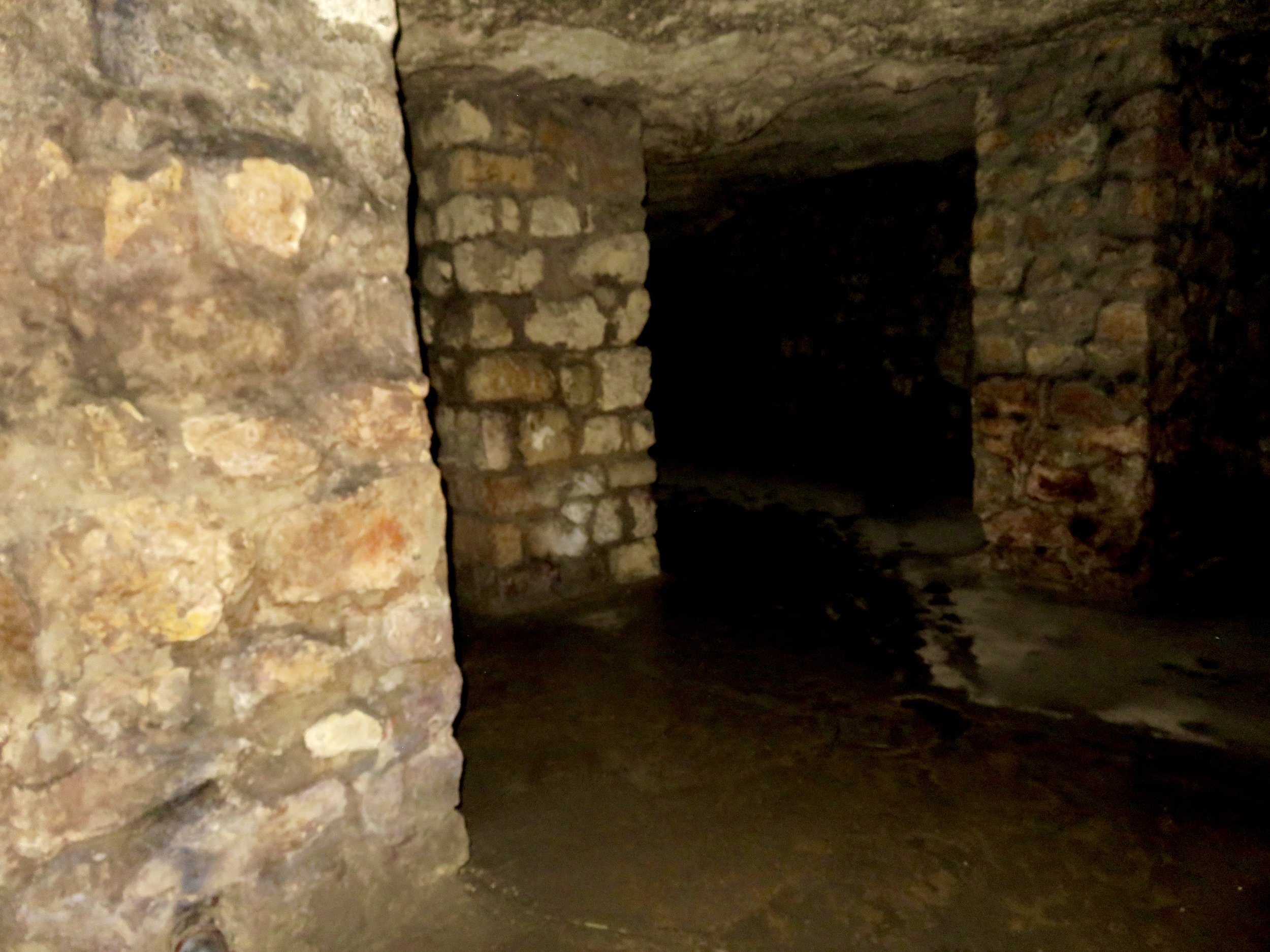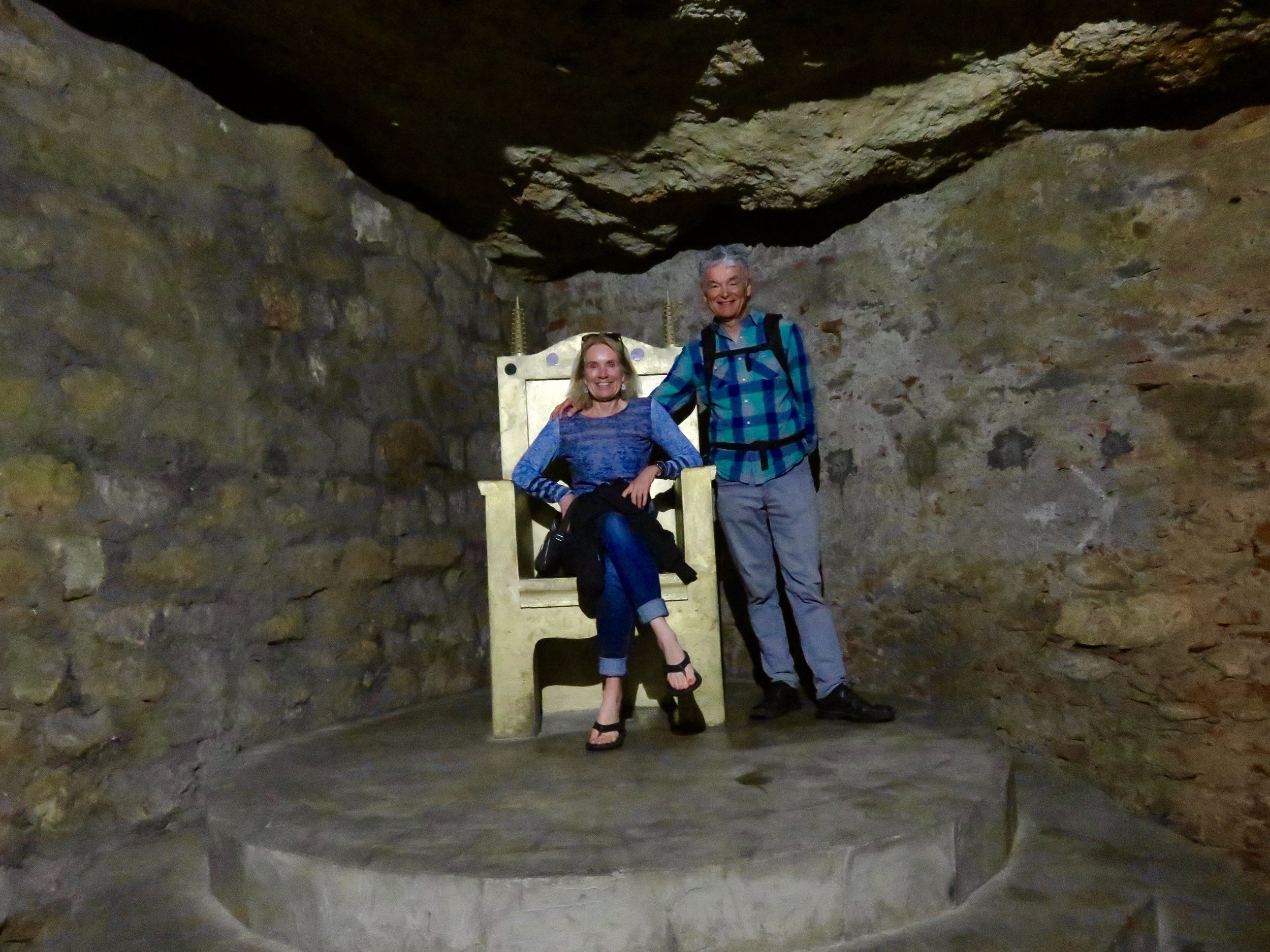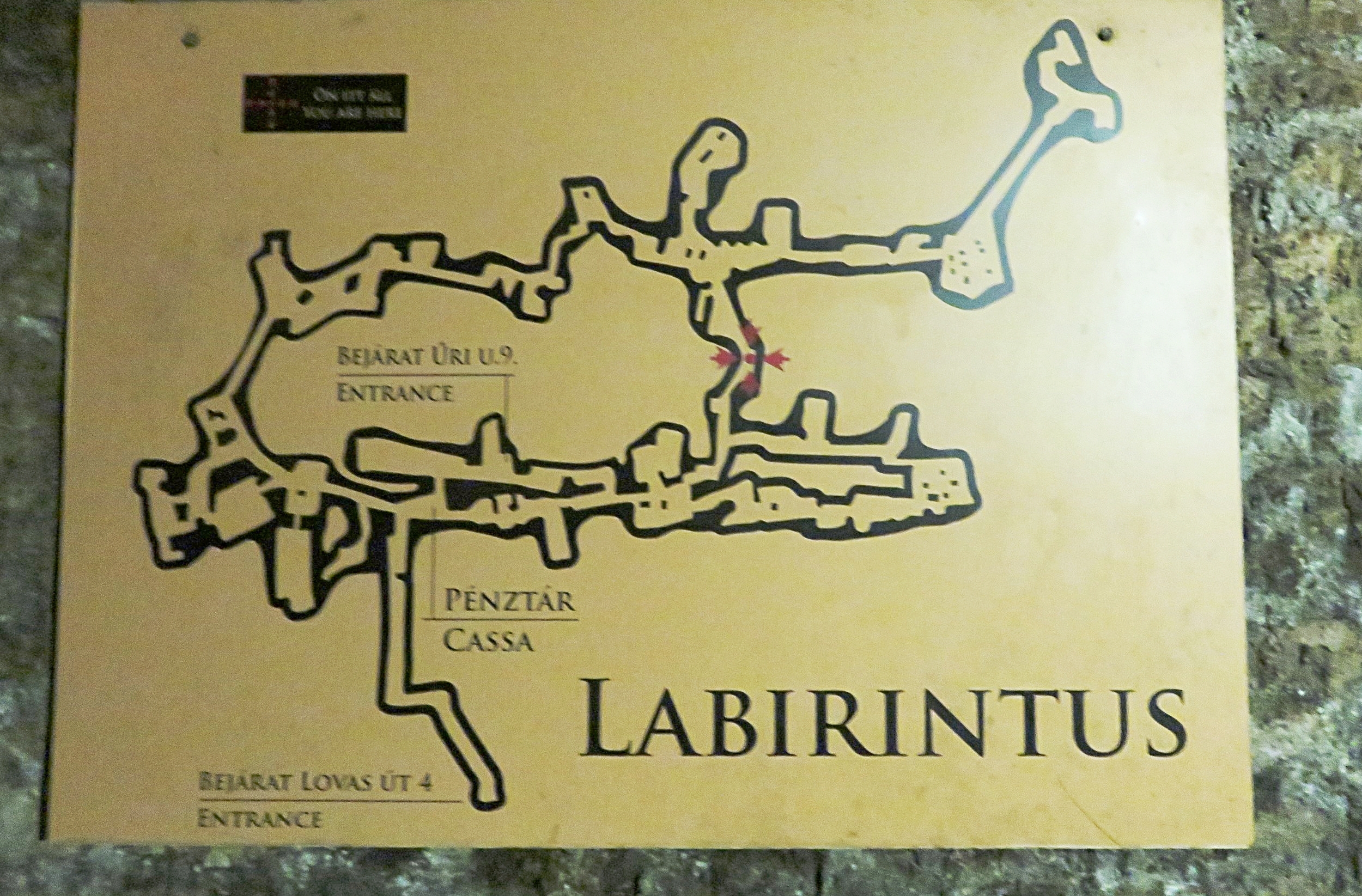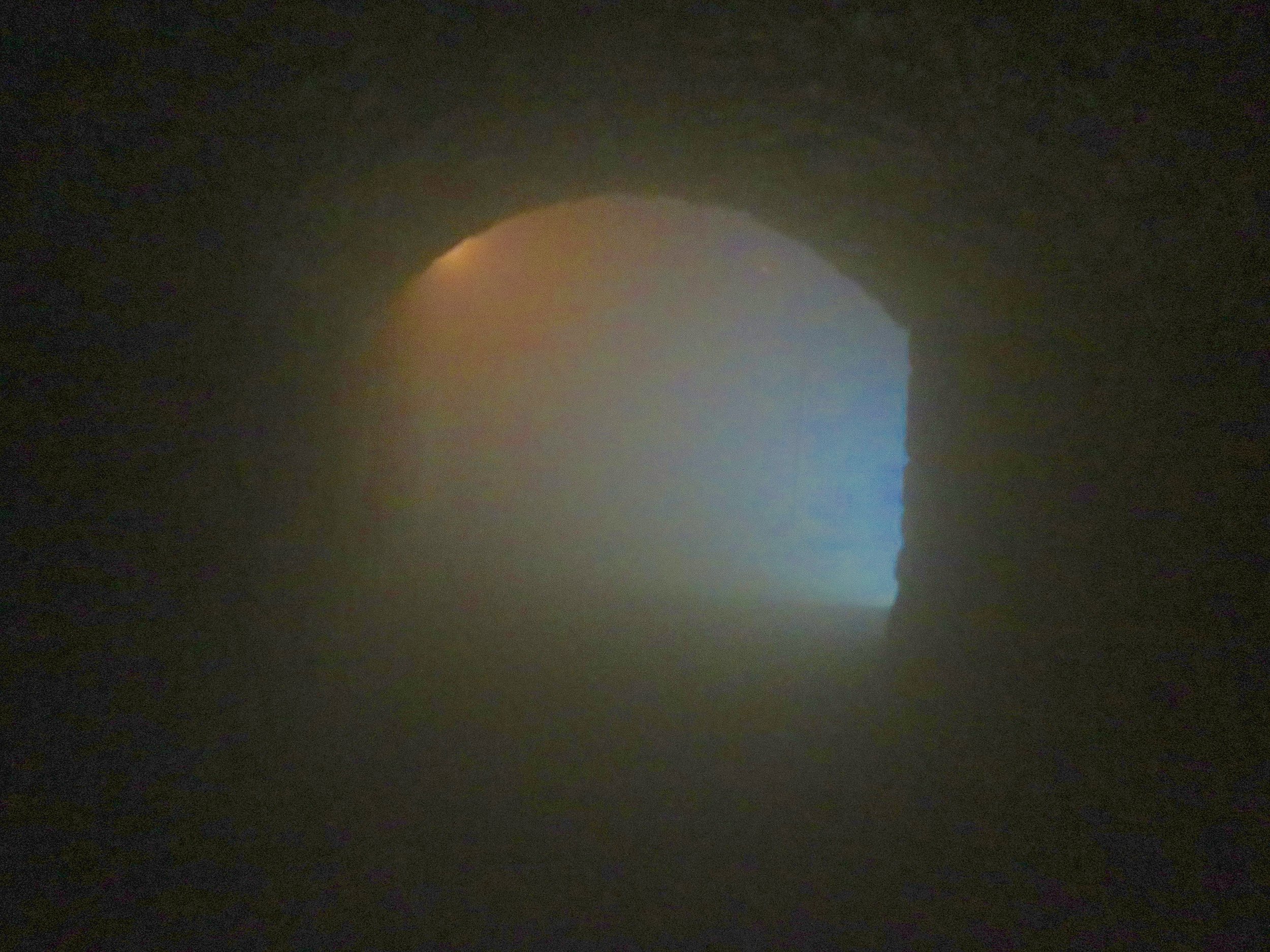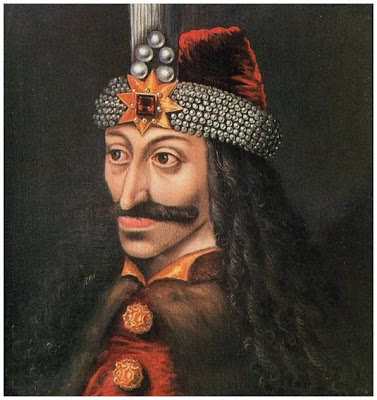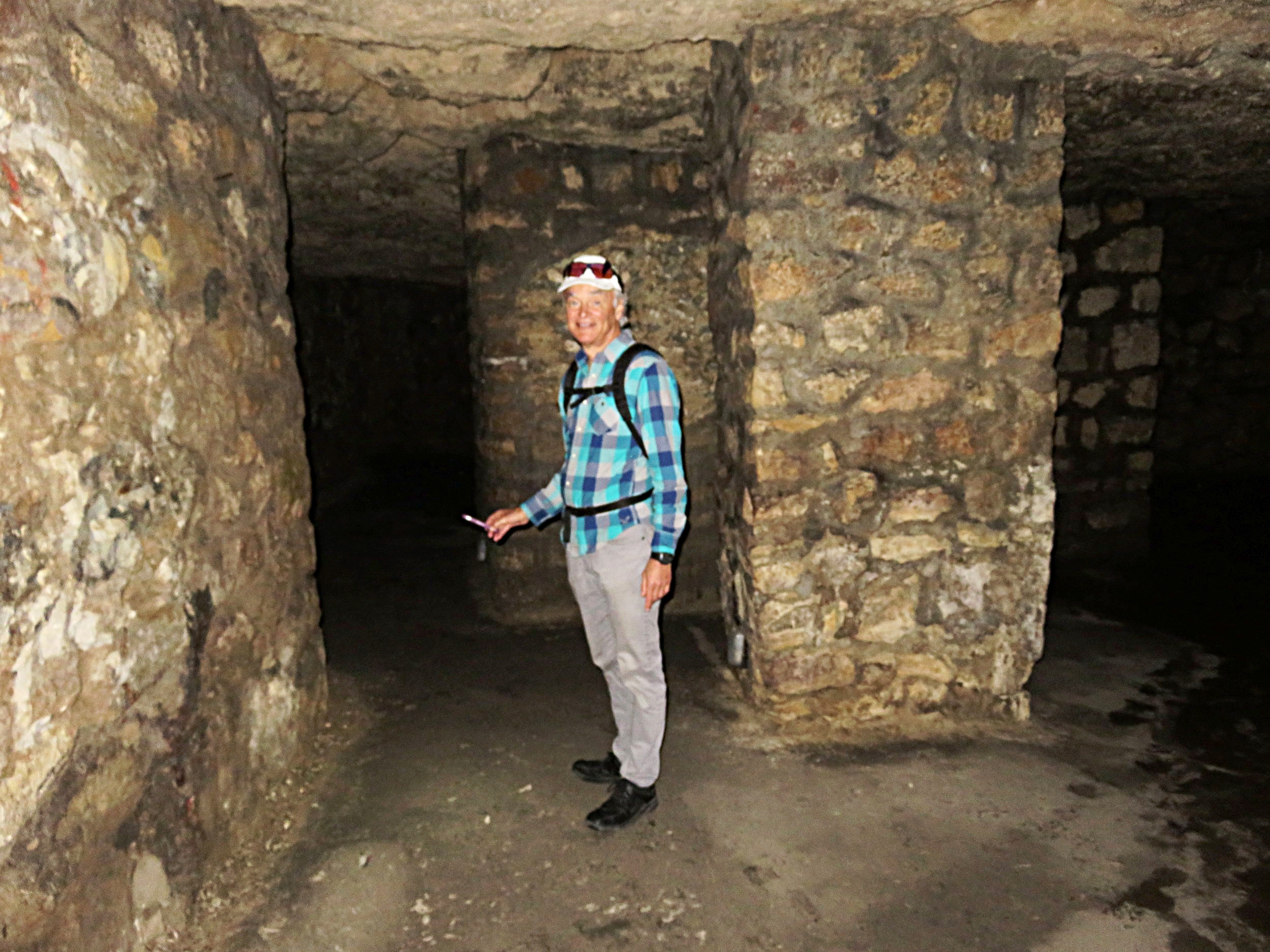It’s October. A chill is creeping into the autumn air and scarlet leaves the colour of blood blow from skeletal trees in a final, desperate flight - beautiful, but dead! How’s that for setting the tone for this post?
Halloween is fast approaching and the streets will soon be filled with witches, zombies and...vampires! I know, I have a morbid fascination for vampires! And okay, I admit...I devoured all four novels of Stephenie Meyer’s “Twilight Series” like an immortal in a feeding frenzy. Perhaps that explains the allure for me of the Labyrinth, a tangled maze of ancient caves and passageways with a dark and mysterious past.
Hubby Don and I were aimlessly wandering the cobbled streets of the Castle Quarter in Budapest, when we came upon an unobtrusive doorway with stone steps leading directly down into the underbelly of Buda-hill. Still exhausted from cycling and, for lack of anything less-energetic to do, we descended the stairs not really knowing what we’d discover at the bottom.
After several twists and turns, we found ourselves in a large cavern in front of a Hungarian cashier who wanted 2500 HUF (the equivalent of $12 CDN) before she would allow us to proceed. She spoke no English and after we’d paid, gave a disinterested waive in the general direction of an iron gate.
On the way by, I snagged an English brochure from her desk in hopes of gaining some insight. It said (in stilted English, obviously translated from Hungarian) the Labyrinth was 1000 meters long, walkable in approximately 30 minutes and the arrows would offer help with directions. The ancient cave system, it told me, had operated as a prison and torture chamber and Dracula was said to have been imprisoned there.
That caught my attention! Dracula was a real person? It was news to me - I thought he was the infamous anti-hero of the Gothic horror novel of the same name.
Not so, according to the brochure. Apparently, the fictional character created by the author, Bram Stoker, was loosely based on the real deal - a 15th century, Romanian war lord, Vlad Tepes (or Vlad III), who was by all accounts an equally bloodthirsty dude. He was affectionately known as Vlad, The Impaler, because his speciality was – you guessed it – impaling people and then displaying their bodies publicly to frighten his enemies.
Passing through the gate into the Labyrinth (admittedly with a degree of trepidation), we were immediately swallowed by inky blackness. If there were “arrows”, as the brochure so optimistically advertised, there was no way to see them. Groping the dank walls, we shuffled forward with tiny, tentative steps. Within moments, I managed to walk smack into a stone column in the middle of the pathway - which entertained Don to no end. Then we remembered our iPhones and used them to illuminate areas not lit by occasional dim lanterns.
Moving deeper into the cave, the underground air - heavy and humid - chilled noticeably and we took a passageway proudly pronounced to be “Dracula’s Chamber”. There sinister music and something that looked like smoke but felt like fog enhanced the spooky atmosphere. The creepy image of the dark, brooding Vlad III displayed on the cave wall leered down at us. Curiously, the historical figure resembled the physical description of Bram Stoker’s Dracula in the novel.
After about an hour’s worth of losing our way, backtracking and retracing our steps, we emerged from the maze, wondering how many tourists they’d lost. I have no doubt they have to undertake a sweep of the place before closing every night to retrieve them all.
With a bruised forehead from my close encounter with rock, I returned to our hotel, to immediately Google, “Vlad, The Impaler”. As it turns out, the life and deeds of the real Dracula are no less fascinating and fearsome than those of his literary namesake. There seems to be a great deal of mystery surrounding him, but here’s what I gleaned:
It is believed the historical Dracula was born in 1431 in Transylvania (now Romania) - a prince, not a Count. The name originated from Vlad’s dad who belonged to a secret fraternity called the “Order of the Dragons”. Since in Romanian, “Drac” means dragon and the ending “ulea” means “son of”, Vlad III became known as the “Son of the Dragon” or Dracula.
At the age of thirteen Vlad and his brother were taken as political hostages for four years by the Ottomans - maybe that contributed to his overall nastiness in later life. After his release, he gained and lost the throne to his kingdom three times in a continuous struggle to fend off one or the other of his powerful neighbours, Hungary and the Ottoman Empire.
Under the reign of King Matthias (Hungarians most beloved monarch), he was captured and purportedly imprisoned in the Labyrinth. There are conflicting stories on how long he languished there, but the brochure said ten years.
Surprisingly, after his release he met and married a member of the Hungarian Royal Family, which makes one wonder what went on down in the caves during his incarceration. Mystery also surrounds his death and final resting place. Some say he was killed in battle in a bid to once again retrieve his throne, others say he was assassinated.
There is no question though that during his intermittent rule, he earned a reputation for heinous acts of torture, murder and inhuman cruelty. Several historians credit him with the deaths of between 40,000 to 100,000 people. While some attempt to justify his actions on the basis of political necessity, many more report that he had a taste for cruelty and derived perverted pleasure from it.
Well...there you have it! “Vampirical” evidence that Dracula is both man and myth - a fictional Count who turns into a bat, sleeps in coffins and drinks the blood of the living and the notorious Vlad Dracula, the Impaler, a Romanian Prince who lived and died in the 15th century.
Happy Halloween everyone!
